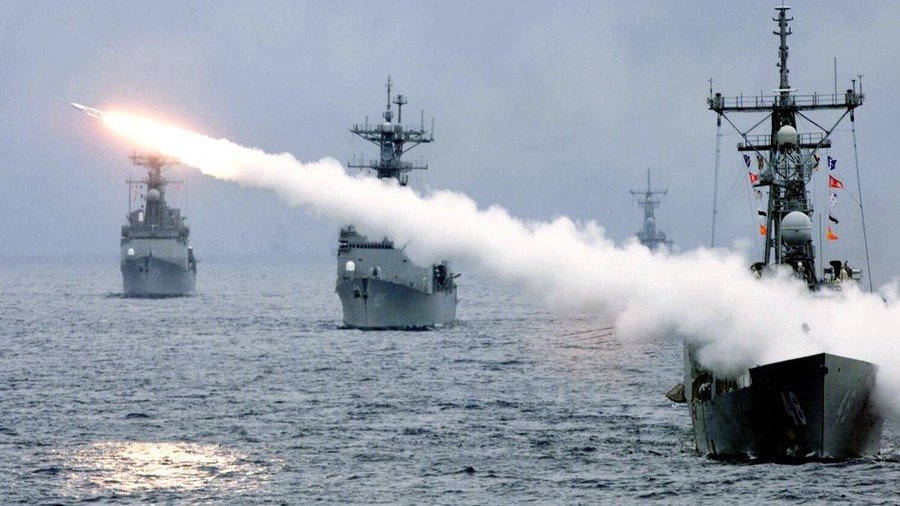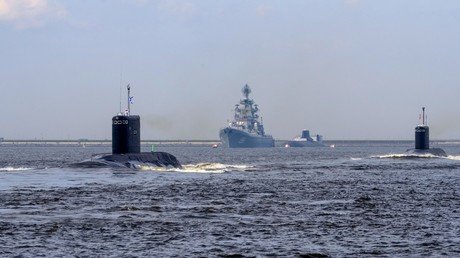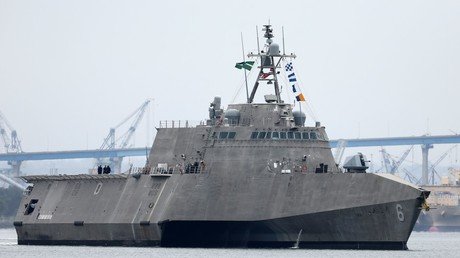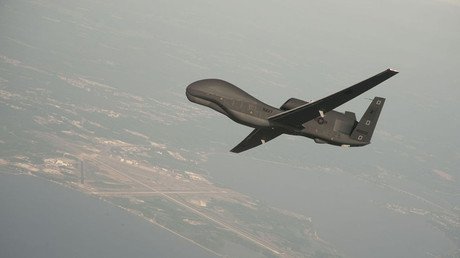US seeks to buy new anti-ship missiles to ‘close gap’ with Russia; but will it?

The Pentagon has signed a contract to acquire brand new anti-ship missiles. The move is apparently aimed at replacing outdated naval weapons and in particular to catch up with Russia. Whether the US will succeed is another story.
The US Defense Department awarded the $14.8 million contract for the so-called Over-the-Horizon Weapon Systems to the Raytheon Company on Thursday, it said in a statement. The contract envisages the delivery of “encanistered missiles loaded into launching mechanisms; and a single fire control suite,” the statement says.
In fact, though, the missile officially chosen by Pentagon is a Norwegian-designed Naval Strike Missile (NSM), which, under the terms of the contract, will be jointly produced by Raytheon and the Norwegian Kongsberg Gruppen Company. The two corporations announced in 2015 that they would jointly compete for the contract.
Eventually, they emerged as the only competitors for the contract, as major rivals Boeing and Lockheed Martin each withdrew from the competition last year. As a result, the US Navy is poised to get a subsonic anti-ship missile that has a range of some 100 nautical miles (185 kilometers). The NSM has been in service in the Royal Norwegian Navy since 2012 and has also been purchased by Poland for its coastal defenses.
The US contract “is expected to be completed by May 2020,” according to the Pentagon’s statement. It is not specified how many missiles the US military are planning to buy. The statement says, however, that the cumulative value of the deal could grow up to some $847 million if “all options” are exercised.
Alarming technological gap
The news comes as the US Navy struggles to fill its capabilities gap while facing tough competition with Russia and China. Experts warned as early as 2015 that the US Navy desperately needed new anti-ship missiles. The Harpoon missiles currently used by the US naval forces were actually introduced in 1970s and have been largely outdated, particularly due to their insufficient range.
“No ship in our inventory can disable another ship with its organic weapons at ranges greater than approximately 70 miles [129 km] (the range of the Harpoon missile), and no ship has been added to the inventory since 1999 that can fire the Harpoon missile,” Bryan McGrath, former Navy official, managing director of The FerryBridge Group naval consultancy and deputy director of the Center for American Seapower at the Hudson Institute, testified before Congress back in 2015, the National Interest reported at that time.
“In order to raise the level of conventional deterrence represented in our forward deployed surface vessels, the Navy must move quickly to close this gap,” McGrath added. However, even the prospective US NSM seems to be unlikely to help the US military to achieve this goal as it has a shorter range and slower speed than existing Russian anti-ship missiles.
'Increasing danger to US fleet'
Russia possesses special modifications of the Kalibr and Onyx missiles to target the surface vessels of any potential adversary. The anti-ship Kalibr missiles are capable of striking their targets at a range amounting to 220-275 kilometers, according to the Russian state weapons exporter, Rosoboronexport.
Apart from that, the Russian Navy also has supersonic Onyx anti-ship missiles that have a range of 300 kilometers, according to the Russian military and industrial corporation, which manufactures the missiles. According to Rosoboronexport, certain modifications of the Kalibr missiles are also capable of flying at more than two twice the speed of sound.
Notably, in 2015 the National Interest warned that Russia’s long-range supersonic anti-ship missiles “are difficult to intercept and pose an increasing danger to the US fleet.”
In 2016, Russia also tested its brand new supersonic Zircon missile, which can fly at over 6,000 km/h. With a rumored range of at least 400km (1,000km, according to other reports), the new missile will be able to find its target in a matter of minutes, making it impossible for a naval vessel to escape its reach, which is a common problem with modern subsonic anti-ship cruise missiles.
Zircon missiles will reportedly be mounted on the newest fifth-generation nuclear-powered Husky class submarines, currently in development. The US, meanwhile, seems to have some problems with the ships that are expected to carry its new NSM missiles – the Littoral Combat Ships (LCS).
The LCS was supposed to give the navy a strategic edge in coastal waters, replacing frigates and destroyers in missions ranging from mine-sweeping and anti-submarine operations to surface warfare.
But their delivery has been slashed, after years of ballooning costs coupled with crippling mechanical failures. Back in 2016, the government auditors told a US Senate panel that the LCS are over-budget, far behind schedule and cannot perform any of their designated missions.
Only 17 ships have been delivered since the first one rolled off the dock in 2008. According to the reports, even the ships used to train new crews are not operational.
Think your friends would be interested? Share this story!


















